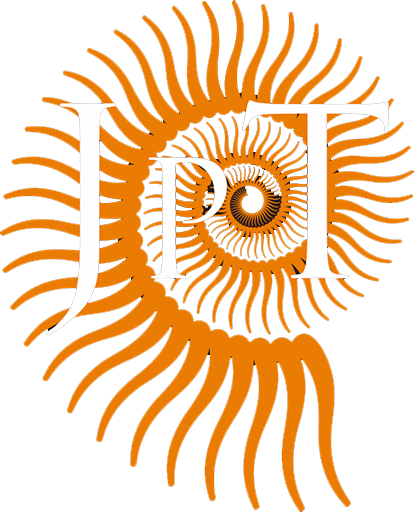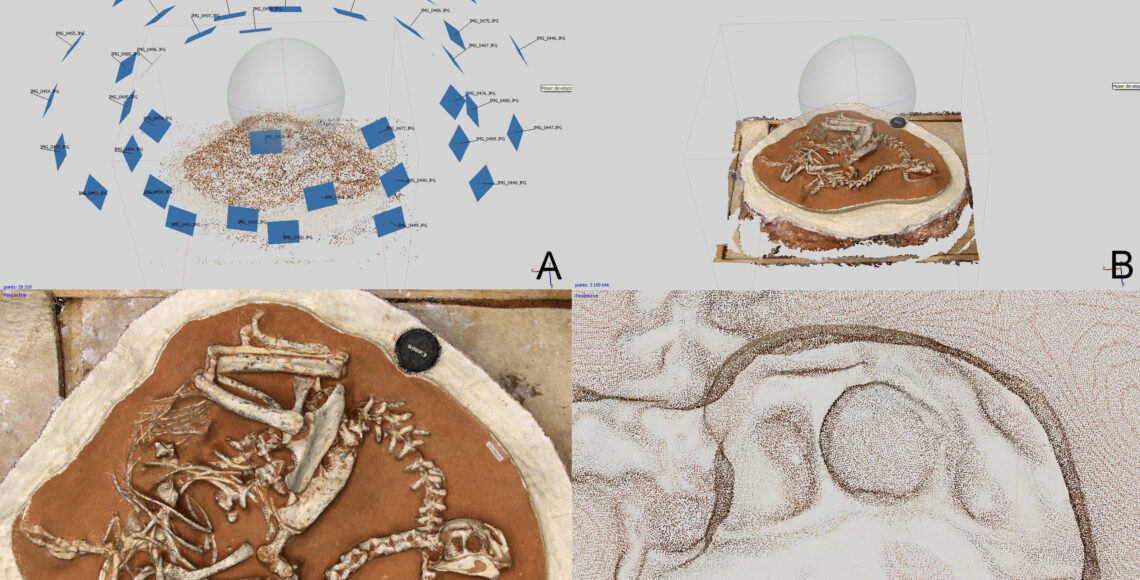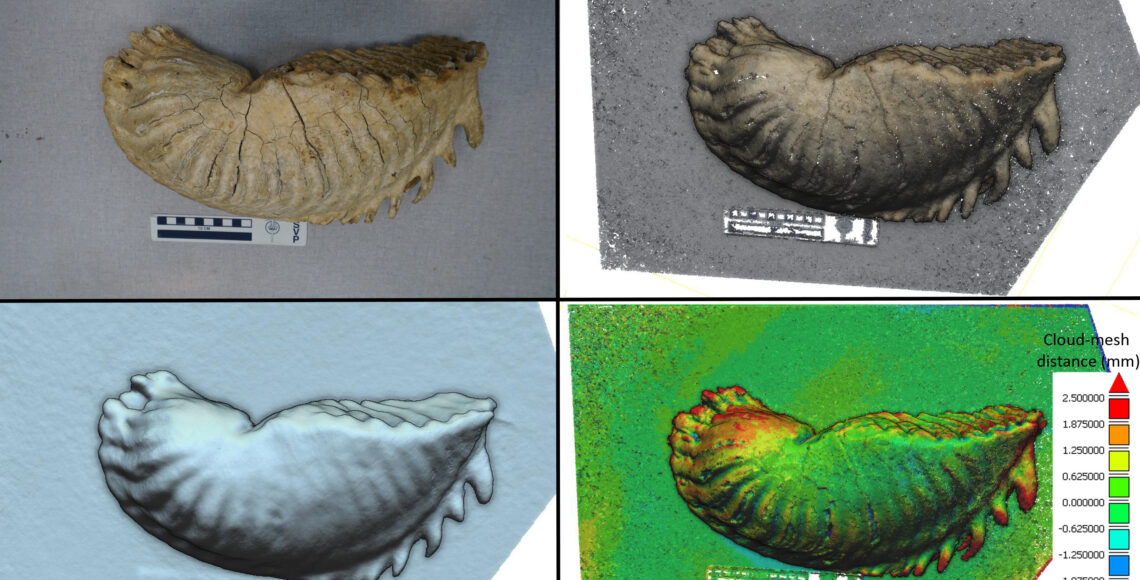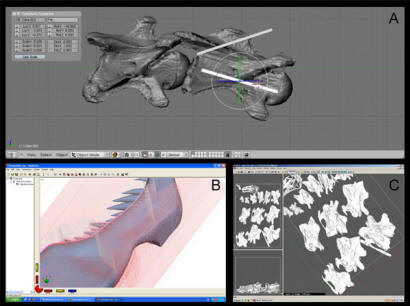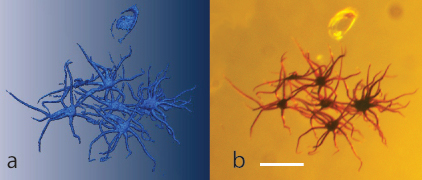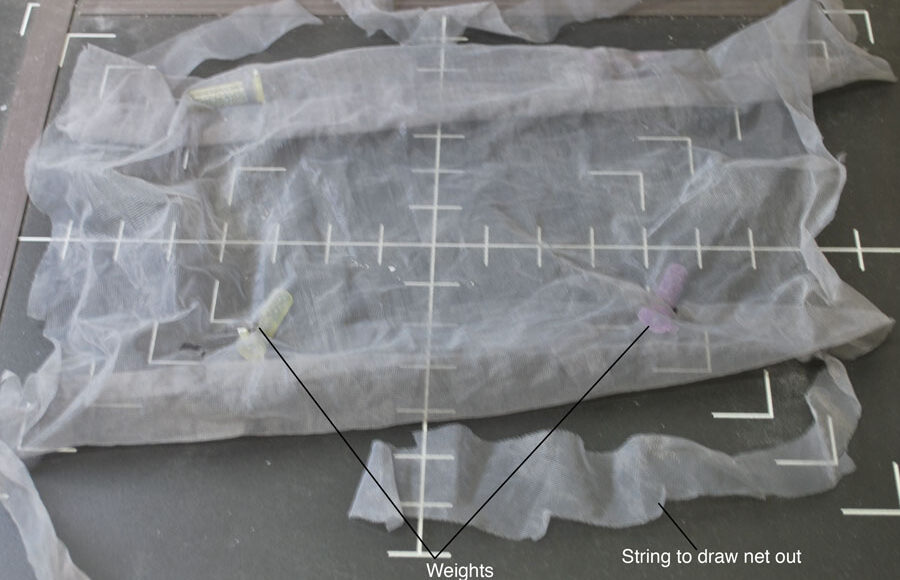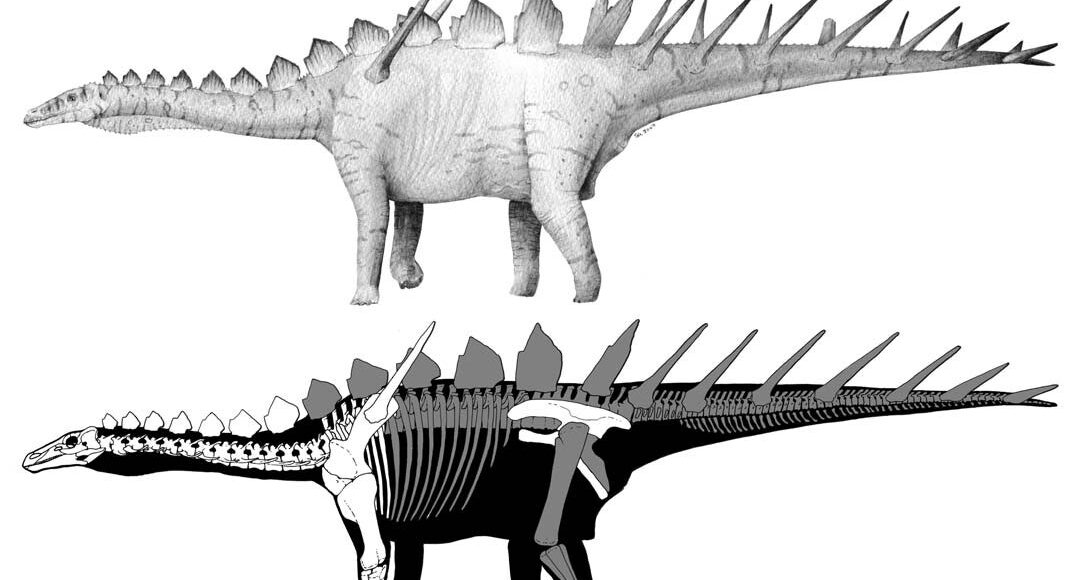Jonathan S. Mitchell1,2 and Andrew B. Heckert1
1- Department of Geology, Appalachian State University, 572 Rivers Street, Boone, North Carolina, USA
2- Committee on Evolutionary Biology, University of Chicago, 5801 South Ellis Avenue, Chicago, IL 60637-1546; mitchelljs@uchicago.edu (current address)
ABSTRACT
Concentrated deposits of small remains from vertebrates, termed microvertebrate sites or vertebrate microsites, are a unique and detailed source of information about the history of life. Collecting fossils from these sites, however, presents unique challenges. The most time consuming, and thus most deterring, aspect by far is the separation of the fossils from the sediment. This study attempts to quantify to what extent the use of sodium polytungstate (=sodium metatungstate, Na6H2W12O40, abbr. SPT) filtration increases fossil concentration, how quickly fossils sink in SPT solutions, and what is a good working density for SPT. We do this by generally following the methodology set out by previous authors, although with some substantial modifications, on an Upper Triassic deposit dominated by clay minerals and lithic fragments, as well as on a second, smaller quartz sand dominated microsite. We also provide a revised and detailed guide with our modifications to former practices and our recommendations to other workers interested in creating a SPT laboratory, including the strong advisory to work over thin plastic sheets, as SPT can react with metal and adheres strongly to glass when it crystallizes.
Our experiments have shown a significant improvement in fossil concentration (from ~2% of the clasts being fossils to ~19%) at the main site, with a sample from the other site showing the treated concentrate as 25% fossil. We have also found very few fossils in the float (<0.5%), but noticeable rates of fossil loss in SPT solutions above ~2.80 g/mL (up to 16%). Further, we have found that 2.75 g/mL is a good working density for several lithologies, as it is high enough to float most rock, low enough to sink most fossils, and low enough to be manageably maintained. SPT has, in processing one particularly rich site, saved many person-hours that otherwise would have been spent picking through less concentrated sediment.
INTRODUCTION
Studies of microvertebrate fossils (or vertebrate microremains) are becoming increasingly common (Sankey and Baszio, 2008). Despite providing a wealth of information about past environments and ecosystems, microvertebrate studies are stymied by the difficulty of collection. The process of collecting and isolating large numbers of what are, by definition, tiny and potentially fragile fossils can be extremely time consuming and tedious. Methods have been developed to expedite this process (Cifelli et al 1996:18, Wilborn 2009), yet the fundamental methodology remains extremely similar to its original construction (Hibbard 1949). Further, no one to date has quantified the efficacy of these methods for vertebrate paleontology (though see Bolch, 1997 for dinoflagellates, Krukowski, 1988:315 for conodonts, Murray and Johnston, 1987:319 for heavy minerals in sediments, and Munsterman and Kerstholt, 1996 for palynological experiments). After a site has been located, it is typically surface collected, then excavated, with vast quantities of sediment being taken away. These bags of sediment are then screen-washed in an attempt to remove as much clay and fine silt, while simultaneously retaining as many fossils, as possible. After screen-washing, there typically remains a significant volume of concentrate, which is usually composed primarily of non-fossil clasts. After this step, a researcher, preparator or volunteer must go through the screen-washed concentrate one pinch of sediment at a time under a light microscope, isolating and removing individual fossils. These standard techniques for recouping micro-vertebrate remains from concentrate are extremely time intensive and often dependent on an extensive time investment by students or volunteers (Hibbard, 1949, Grady 1979).
Inevitably, there will be fossiliferous concentrate that needs to be hand picked. The advantage of heavy liquid separation techniques is that they reduce the amount of unnecessary (nonfossiliferous) sediment that needs to be picked through. Traditionally heavy liquid separation was often accomplished using bromide liquids, with their extremely toxic nature representing a significant drawback (Cifelli et al., 1996:17, Murray and Johnston, 1987:317, Murry and Lezak, 1977:17). Murray and Johnston (1987:319) compared SPT to tetrabromoethane (TBE) and found no significant difference for sedimentological applications in the final product, noting only cost and viscosity (concurrent with Cifelli et al., 1996:17-18, though see Jeppsson and Anehus, 1999:57 and below for explanations of this discrepancy) as drawbacks to SPT.
Heavy liquid concentration, regardless of the chemicals used, makes picking both easier and more enjoyable (finding lots of fossils instead of few fossils per unit volume). This also maximizes research time by speeding up fossil recovery. The heavy liquid discussed here, sodium polytungstate (=sodium metatungstate, Na6H2W12O40, abbr. SPT) can be purchased dry and dissolved in deionized water to any desired density from 2.00 g/mL to 3.10 g/mL.
Tungsten compounds have been found to be safe in general (Kazantzis,1979), and sodium polytungstate, unlike bromides and kerosene, is generally regarded as safe unless ingested or applied to the eye (Cifelli et al., 1996:17 and many references therein, also see the Material Safety Data Sheet [MSDS, linked in references] or equivalent safety documentation). Further, sodium polytungstate can be reused continually, assuming it is taken care of properly. It is however, quite expensive (>$200 per 0.1kg), and traditionally difficult to obtain (though the Internet has reduced that problem, as a simple Google® search will reveal). Further, we followed the recommendations of Callahan (1987:765) in using bleached coffee filters instead of filter paper (contra Murray and Johnston, 1987:318) as they appear to speed recovery, but they also seem to have allowed clays to enter and discolor the SPT (though no other side effects have been confirmed, they may have absorbed some of the SPT as a precipitate, see McCarty and Congleton, 1994:198). Six et al. (1999) describe a process of cleansing SPT of organic contents by percolation through a column of activated carbon, and similar methods may work for the removal of clay, though we did not test this, and Murray and Johnston (1987:317-319) and Callahan (1987:765) both argue that laboratory-grade filter paper is enough. Yet as a possible (though unlikely) consequence of clay contamination (clay from a previously separated site contaminating future sites’ fossils) we advise caution in performing geochemical analyses on SPT separated fossils without heavily rinsing them until further studies on the solution’s effects and the efficacy of clay removal are performed.
Despite these modest drawbacks, SPT still provides a powerful tool for the paleontologist/preparator’s arsenal, as we found it easy to use, efficient, and very effective (see below). The ability to continually reuse it, as well as its speed and efficacy, make it cost effective in the long run, albeit a rather large initial investment is required. Here we outline the materials we recommend for a sodium polytungstate separation laboratory, the methods of separation, and the efficacy of the system.
